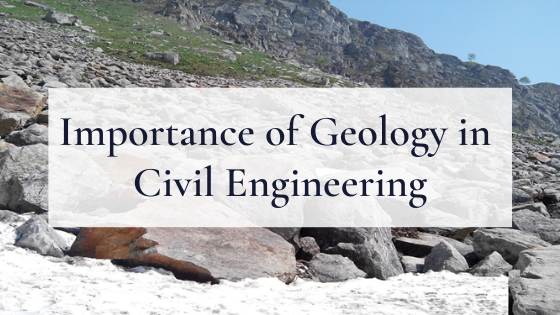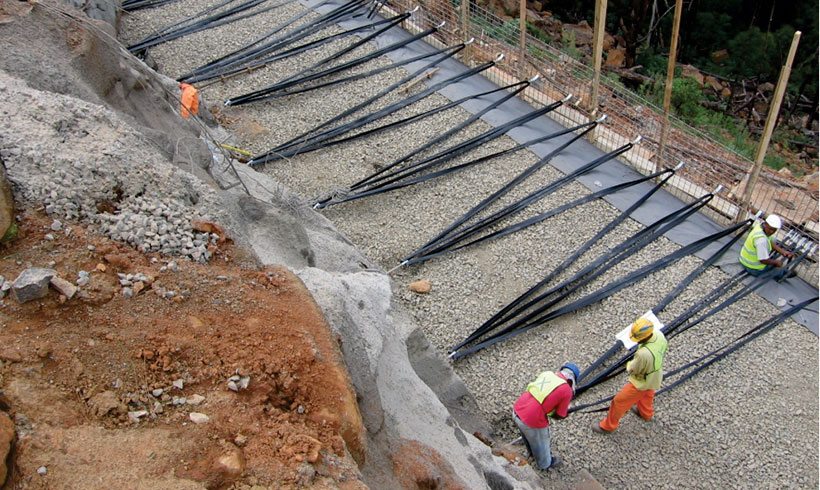The 20-Second Trick For Specialized Geotechnical Engineering Solutions
Specialized Geotechnical Engineering Solutions - The Facts
Table of ContentsGet This Report about Specialized Geotechnical Engineering SolutionsSome Known Details About Specialized Geotechnical Engineering Solutions The Single Strategy To Use For Specialized Geotechnical Engineering SolutionsNot known Facts About Specialized Geotechnical Engineering SolutionsOur Specialized Geotechnical Engineering Solutions IdeasSpecialized Geotechnical Engineering Solutions - The Facts
William Rankine, a designer and physicist, created a different to Coulomb's earth pressure concept. Albert Atterberg established the clay uniformity indices that are still utilized today for dirt category. In 1885, Osborne Reynolds acknowledged that shearing causes volumetric extension of dense products and contraction of loosened granular materials. Modern geotechnical engineering is stated to have started in 1925 with the publication of Erdbaumechanik by Karl von Terzaghi, a mechanical engineer and rock hound. Terzaghi additionally developed the framework for concepts of bearing ability of structures, and the concept for prediction of the rate of settlement of clay layers as a result of loan consolidation. Afterwards, Maurice Biot totally developed the three-dimensional dirt combination concept, prolonging the one-dimensional version formerly established by Terzaghi to more basic hypotheses and introducing the collection of basic formulas of Poroelasticity.
Geotechnical designers check out and determine the homes of subsurface conditions and products.
Get This Report on Specialized Geotechnical Engineering Solutions
Geologic mapping and interpretation of geomorphology are usually completed in examination with a geologist or engineering rock hound. Subsurface exploration normally involves in-situ testing (for instance, the basic infiltration test and cone penetration examination). The excavating of test pits and trenching (especially for situating faults and slide airplanes) might also be utilized to find out about dirt problems at depth. , which utilizes a thick-walled split spoon sampler, is the most typical method to gather disrupted examples.

Normally, the user interface's precise geometry is unknown, and a streamlined user interface geometry is presumed. Finite inclines need three-dimensional designs to be evaluated, so most inclines are examined presuming that they are infinitely vast and can be stood for by two-dimensional designs.
The Of Specialized Geotechnical Engineering Solutions

Dimension of quantities and examination of actual conditions. Layout modification per real problems The observational technique appropriates for construction that has actually currently started when an unforeseen growth occurs or when a failure or mishap looms or has actually currently happened. It disagrees for tasks whose layout can not be altered during building.
Concepts of Geotechnical Design. Thomson Understanding. Budhu, Muni (2007 ). Soil Mechanics and Foundations. John Wiley & Sons, Inc. . ISBN 978-0-471-43117-6. Disturbed soil buildings and geotechnical layout, Schofield, Andrew N., Thomas Telford, 2006. Guerriero V., Mazzoli S. (2021 ). "Theory of Effective Stress in Soil and Rock and Implications for Fracturing Processes: A Review".
The 8-Minute Rule for Specialized Geotechnical Engineering Solutions
Concepts and Practice of Ground Enhancement. see this website Ground Renovation Principles And Applications In Asia. Design analysis in rock mechanics.
Cengage Knowing, Stamford, 666 p. Atkinson, J., 2007. The mechanics of soils and foundations. Taylor & Francis, N.Y., 442 p. Floating Offshore Wind Generators: Responses in a Sea state Pareto Ideal Styles and Financial Analysis, P. Sclavounos et al., October 2007. Nicholson, D, Tse, C and Dime, C. (1999 ). The Observational Method in ground engineering principles and applications.
Specialized Geotechnical Engineering Solutions Fundamentals Explained
These reports are customized to fulfill the certain requirements of a job and include layout specifications and recommendations for the building and construction of a series of manufactured structures. Along with supplying consultancy services covering locations such as slope security and load-bearing abilities for different products, these designers undertake r & d activities to boost methods, equipment, products understanding and analysis covering whole lifecycles (Specialized Geotechnical Engineering Solutions).
Engineering the residential properties and auto mechanics of rocks consisting of the application of dynamics, liquid mechanics, kinematics and product mechanics. This unites a knockout post geology, soil and i thought about this rock technicians, and structural design for the style and construction of structures for a range of civil engineering tasks. This area involves anticipating the performance of foundation soil and rock to a lots imposed by a structure, while considering performance, economic situation and safety.
Nonetheless, rates of pay typically raise as your knowledge and skills expand, with standards pointing to a graduate starting income of in between 18,000 and 28,000 per year in the UK. This increases to 26,000 to 36,000 with a few years of experience and after that getting to 40,000 to 60,000+ for elderly, chartered or master engineers.
The Specialized Geotechnical Engineering Solutions Ideas
However, with the right application it is feasible to understand the occupation and gain entrance to a difficult yet gratifying and essential profession. A rock hound would certainly require to re-train to end up being a geotechnical engineer, although there is a lot of cross-over between the two careers, which can make this much easier. Geologists require to have an understanding of dirts, rocks and other products from a scientific perspective, while geotechnical designers tale their expertise of issues such as soil and rock technician, geophysics and hydrology and use them to engineering and ecological projects.
When starting, these engineers will certainly have a tendency to deal with much less complicated projects, accumulating expertise and experience prepared for even more difficult job later. Geotechnical designers tend to be experts in specific locations as they grow in experience, concentrating on particular facilities such as railways, roads or water. These designers also collaborate with renewable power, offshore and onshore oil and gas, nuclear power, and more.